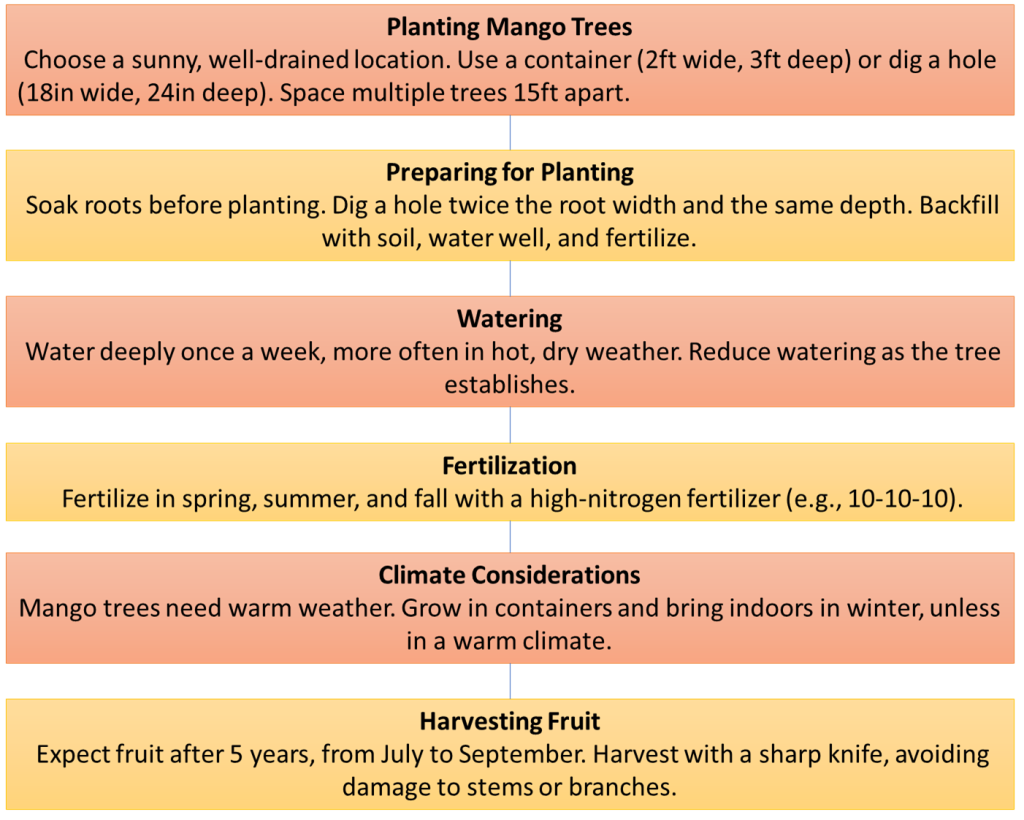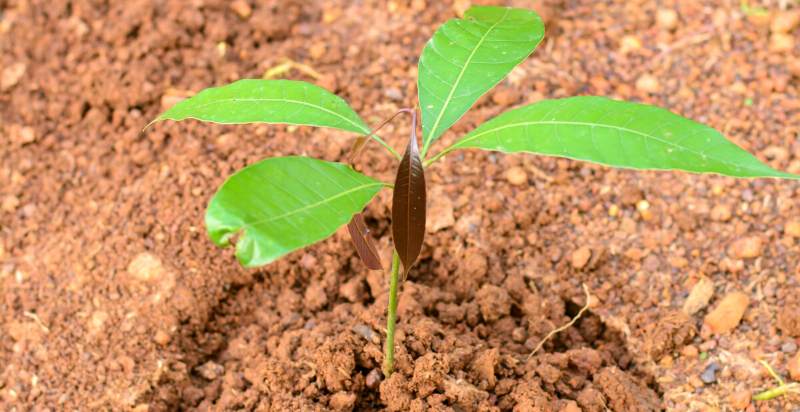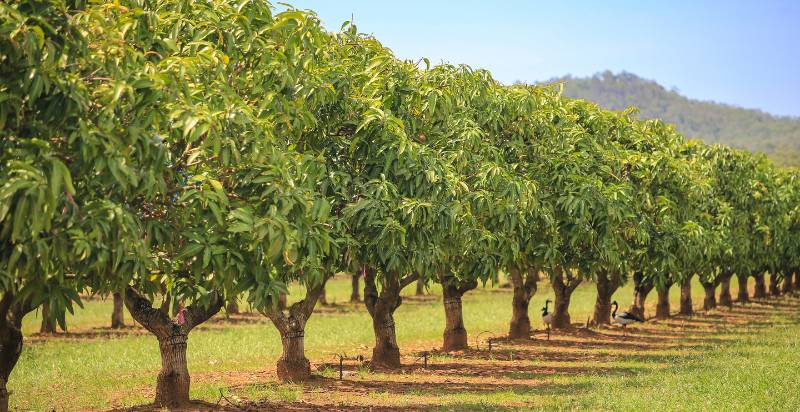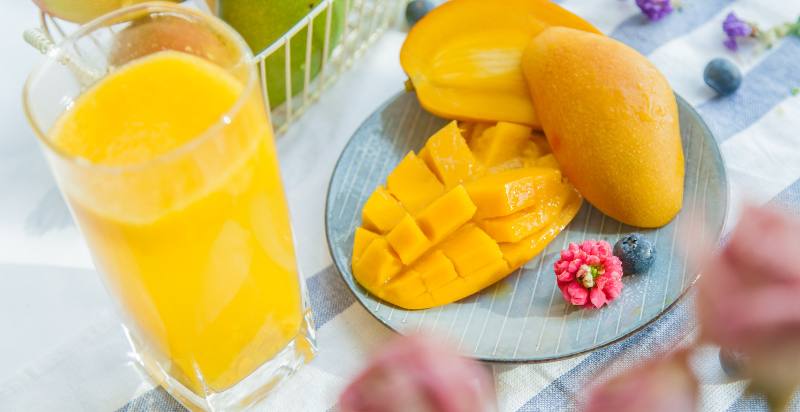Welcome to the juicy world of mangoes, where each bite bursts with tropical delight! Mangoes, lovingly hailed as the “king of fruits,” are not just a delicious treat; they’re a symbol of sunshine and sweetness in every sense. From their luscious flavor to their vibrant hues, mangoes tantalize our taste buds and transport us to paradise with every bite. But there’s more to these magical fruits than meets the eye- join us on a fruity adventure as we uncover the secrets of growing, harvesting, and savoring these golden treasures straight from the garden to your plate!
History:
With roots tracing back to India or Southeast Asia, this tropical treasure has been cherished for over 4,000 years. Enshrined in ancient scriptures and epics like the Vedas and Ramayana, mangoes symbolize love, fertility, and prosperity. As the story goes, Buddhist monks carried the mango’s legacy to Malaysia and beyond in the fifth century BCE, spreading its sweetness across Southeast Asia. From there, mangoes journeyed to East Africa and the Middle East and eventually landed in the Americas with intrepid explorers. Today, India reigns as the mango monarch, joined by China, Pakistan, Thailand, and Indonesia in the realm of mango production.
Health & Nutritional Benefits of Mangoes:
- They are rich in vitamins A, K, C, and E, along with the B complex vitamins, which can boost immunity and prevent cancer.
- Mangoes are abundant in water and dietary fiber, aiding digestion and alleviating issues like diarrhea and constipation.
- Consumption of mangoes can aid in weight loss, promote healthier skin, and fortify the immune system.
- Contains beta-carotene, which enhances vision and guards against night blindness.
In addition to their nutritional benefits, mangoes are delicious and versatile fruits. They’re sure to please your taste buds whether you enjoy them fresh, in a smoothie, or baked into a recipe. So next time you’re looking for a healthy snack or addition to your meal, reach for a mango!

Types of Mango Trees:
There are many different varieties of mangoes, including the following:
- Alphonso: This variety is grown in India and is considered one of the best-tasting mangoes. It is known as the “King of Mangoes” and is among the most expensive ones. It has a delicate floral undertone accompanied by a symphony of tropical notes, including citrus, apricot, and peach overtones. It has vivid golden-yellow skin with sporadic orange or red flushes. It is available during the peak season, which typically spans from March to June.
- Tommy Atkins: It is a reddish variety that is grown in Mexico, Brazil, and the United States. It is often used in juices and processed foods. These mangoes are renowned for being sweet and slightly tart in taste. They have a tropical flavor with hints of peach and citrus. Tommy Atkins mangoes are widely cultivated and have a long shelf life, making them available year-round in many markets.
- Kent: This variety is grown in Australia and has a greenish-yellow color. Kent mangoes are known for their deep, sweet flavor that has faint citrus and tropical fruit undertones. They are exceptionally enjoyable to eat because of their low fiber content and smooth, buttery feel. These mangoes are in season from March to September.
- Haden: Originated in Florida, the United States. Haden mangoes are vividly crimson with green and yellow undertones and tiny white dots. Their flavor profile is characterized by tropical notes of pineapple, apricot, and peach, with a little citrus undertone. Summertime is the best time to find Haden mangoes accessible, with Florida and other tropical regions having their best crops from April to August.

How to Plant a Mango Tree
A mango tree grows in three stages. The first stage is when the tree is young and growing, lasting up to five years. The second stage is when the tree begins to produce fruit, and the third stage is when the tree matures and produces less fruit.

If you’re new to gardening, greenhouse gardening can be a rewarding experience. It’s a fantastic way to grow a variety of plants under one roof, regardless of the season. For beginners, the key is to get the hang of controlling the environment—temperature, humidity, and light—to create the perfect haven for your plants.
Mango trees can live for many years and produce a lot of fruit. With proper care, your mango tree will provide you with delicious mangos for many years.

Caring for Your Mango Tree:
Mango trees are relatively low-maintenance, but there are a few things you need to do to ensure that your tree is healthy and productive.
Watering
You should water mango trees regularly, especially during the hotter months. Keep the soil moist but not soggy. If the leaves start to turn yellow, this is a sign that the tree is not getting enough water.
Fertilizing
Experts advise fertilizing mango trees three times a year, in the spring, summer, and fall. You might use an all-purpose fertilizer or one made especially for fruit trees. Follow the instructions on the fertilizer package when applying it.
Pruning
Pruning is not necessary for mango trees, but it can help promote fruit production. If you choose to prune your tree, do so in the late winter or early spring.

Harvesting Mangoes:
Harvesting mangoes at the right time is crucial. They should be picked when they are mature but have yet to fully ripe. The size, color, and a slight softening of the fruit can judge this maturity. Mangoes are quite delicate. Handle them gently to avoid bruising.
When picking, it’s best to cut the fruit from the tree rather than pull it off. Leave about a quarter-inch of stem attached to prevent the sap from oozing onto the fruit, which can cause black spots. Check the mangoes for any signs of pests or diseases. Discard any fruit that shows significant damage or rot.
If you’re planning to transport the mangoes or sell them, consider post-harvest treatments like hot water treatment or vapor heat treatment to manage pests and increase shelf life.
Storing Mangoes:
Keep the mangoes at room temperature if they haven’t ripened yet. If you want to keep mangoes for longer than two weeks, you can freeze them. First, wash the fruits and cut off the skin. Then, cut the flesh into small pieces and place them in a plastic bag. Seal the bag tightly and freeze it. Frozen mangoes will keep for up to six months.
When you are ready to use frozen mangoes, thaw them in the refrigerator and then use them in your favorite recipes.
Common Problems with Mango Trees:
Mango trees are generally hardy and trouble-free, but you may encounter a few problems. These include:
- Powdery mildew: This fungal disease causes white or gray powdery spots on the tree’s leaves. It is most common in humid climates. To prevent powdery mildew, ensure your tree has good air circulation and avoid overhead watering.
- Anthracnose: This fungal disease causes black or brown spots on the tree’s leaves, fruits, and stems. It is most common in wet or humid climates. To prevent anthracnose, water your tree at the base rather than from above, and remove any infected leaves or fruits from the tree.
- Bacterial black spot: This disease causes black spots on the tree’s leaves. It is most common in warm, humid climates. To prevent bacterial black spots, water your tree at the base rather than from above and remove any infected leaves.
- Fusarium wilt: This fungal disease causes the tree leaves to turn yellow and wilt. It is most common in warm climates. There is no cure for fusarium wilt, so you can best prevent it by choosing a variety of resistant.
- Mango scab: This fungal disease causes brown or black scabs on the tree’s fruits. It is most common in humid climates. Mango trees should be watered from the base rather than the top to prevent mango scabs, and any affected fruits should be removed from the tree.
- Caterpillars: Caterpillars can cause serious damage to mango trees by eating the leaves and fruits of the tree. To control them, introduce a biological control agent, Bacillus thuringiensis (Bt), which specifically targets caterpillars, or they can be manually hand-picked and destroyed to stop additional damage.
- Mango mealybugs: These pests suck the sap from the leaves and fruits of the tree, causing them to turn yellow and wilt. Mealybugs can also spread disease. To control mango mealybugs, you can use an insecticide or release ladybugs into your garden. You can also hand-pick them off the tree.
-
Mango scale: These pests suck the sap from the leaves and stems of the tree, causing them to turn yellow and wilt. Scales can also spread disease. To control the mango scale, you can use an insecticide or release ladybugs into your garden. You can also hand-pick them off the tree.
Uses for mangoes:
People use mangoes in both sweet and savory dishes. They are frequently included in pies, jams, and other desserts. Additionally, mangoes can enhance the flavor of salads, salsas, and various savory dishes. Also, you can blend mangoes with yogurt, milk, or fruit juices to create delicious smoothies.
You can use mango juice or mango puree to enjoy the mango flavor without eating the fruit itself. These products are available at most grocery stores.
Whether you eat them fresh, frozen, or juiced, mangoes can add a tropical touch to your favorite recipes.

Conclusion:
Mangoes are delicious, wholesome fruits that offer versatile consumption options. To grow a mango tree, choose a variety suited to your climate and water it at the base rather than from above. You should also remove any infected leaves or fruits from the tree.
You can control caterpillars, mealybugs, and scale by using insecticide or by manually removing them from the tree. Mangoes are usually ready to harvest in late spring or early summer.
To store mangoes, place them in a plastic bag and seal them tightly. Frozen mangoes will keep for up to six months. You can incorporate mangoes into both sweet and savory dishes due to their versatility.
- Dino Melons: Description, Flavor, Benefits, And Uses - April 29, 2025
- Pear Trees: Planting, Growing, and Harvesting Pears - March 27, 2024
- Runner Beans (Scarlet Runner Bean): Description, Flavor, Benefits, And Uses - March 21, 2024

11 thoughts on “Mango Trees: Growing and Maintaining a Mango Tree”
Comments are closed.